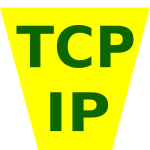Name:
N7NMS
Station ID:
20355
Source:
Symbol:
 TCP/IP network station
TCP/IP network station
Latest Packet:
Status Packet
Receive Time:
1732281323
Age:
1732281323
Path:
APWW11,TCPIP*,qAC,T2CSNGRAD
Comment:
FM09ll/I APRSISCE/32
Latest Position:
39.48717, -79.02933
Receive Time:
1732280977
Latest PHG:
Power 49 W, Height 20 ft, Gain 5 dB omni
(Calculated range: 10.55 miles)
(Calculated range: 10.55 miles)
Packet frequency:
900s (Latest 2 packets)
Nearby stations/objects:
 N7NMS-13
0 yd
N7NMS-13
0 yd
 N3IVK-15
8.4 miles
N3IVK-15
8.4 miles
 444.50+MD
10.22 miles
444.50+MD
10.22 miles
 146.88-MD
10.67 miles
146.88-MD
10.67 miles
 KC3QVY
11.54 miles
KC3QVY
11.54 miles
 N3AMW-2
14.85 miles
N3AMW-2
14.85 miles
 N3LJS-10
16.45 miles
N3LJS-10
16.45 miles
 N3LJS-2
16.47 miles
N3LJS-2
16.47 miles
 KB3UMW-13
18.71 miles
KB3UMW-13
18.71 miles
 KD8AZC
22.09 miles
KD8AZC
22.09 miles
 W3EJE-13
22.43 miles
W3EJE-13
22.43 miles
 443.725PA
23.37 miles
443.725PA
23.37 miles
 K3SMT B
24.28 miles
K3SMT B
24.28 miles
 K3SMT-B
24.28 miles
K3SMT-B
24.28 miles
 K3SMT-R
24.28 miles
K3SMT-R
24.28 miles
- The specified "Station ID" is the ID that this station has on this website, this ID is useful when creating a link to this website. Read more in the About/FAQ.
- To get a better understanding of the APRS path I recommend reading the explanation written by wa8lmf.
- If this packet has the "Posambiguity"-mark it means that the sent position is ambiguous (a configured number of digits has been truncated from the end of the position).
- PHG stands for Power-Height-Gain (and directivity). The height is not the height above sea-level, it is the height above average terrain (HAAT = Height Above Average Terrain). PHG is used to calculate the relative RF range of a station. If this station has reported several positions or symbols the PHG data will only be used for the position and symbol used in the PHG-packet.
- RNG is the "pre-calculated omni-directional radio range" of the station (reported by the station itself). If this station has reported several positions or symbols the RNG data will only be used for the position and symbol used in the RNG-packet. It seems like many D-STAR station use the RNG value to specifify D-STAR range.
- One object may be sent by several different senders. On the map they may share the same path, but they all have their own "Station information" modal.
- If station has more than 15 related stations we will only show the 10 closest related stations.
